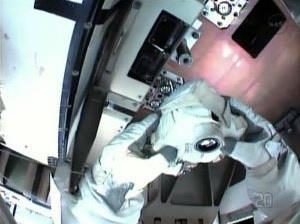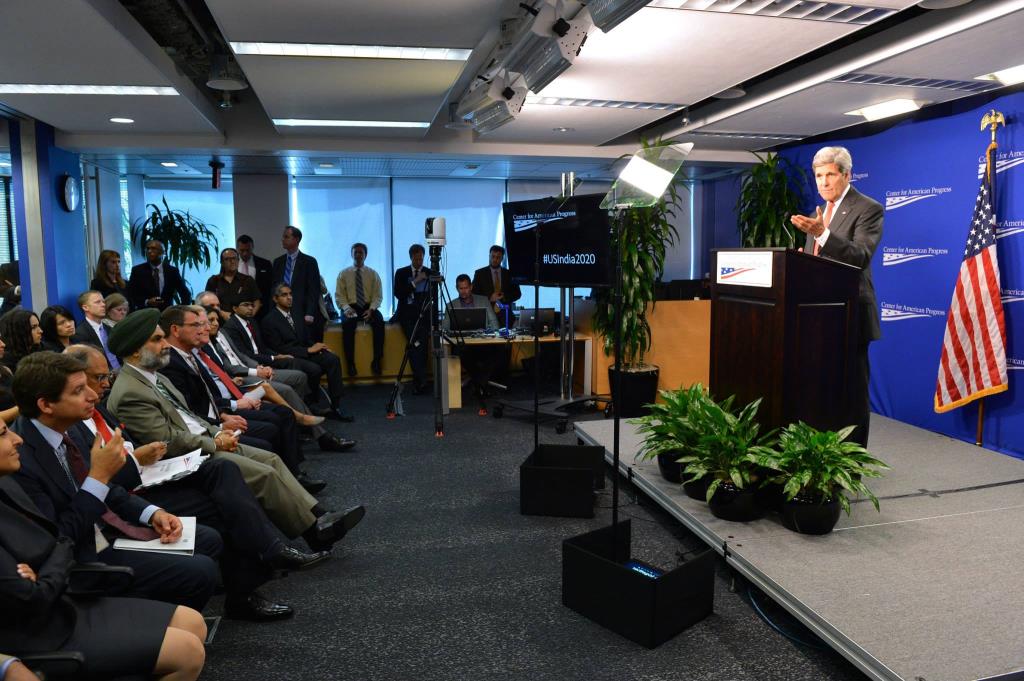May 11, 2013
MOSCOW: Nasa astronauts Tom Marshburn and Chris Cassidy on Saturday began an emergency spacewalk to try to stop ammonia from leaking from the International Space Station's power system, Nasa television showed.

May 11, 2013
MOSCOW: Nasa astronauts Tom Marshburn and Chris Cassidy on Saturday began an emergency spacewalk to try to stop ammonia from leaking from the International Space Station's power system, Nasa television showed.

In this still image taken from Nasa TV, International Space Station astronauts Chris Cassidy takes photos as he works on repairs to the ISS on May 11, 2013.
During the spacewalk, expected to last six and a half hours, flight engineers Marshburn and Cassidy will try to inspect and possibly repair the ammonia leak that affected the US segment of the orbiting laboratory on Thursday.
Earlier, ISS commander Chris Hadfield, who is overseeing the spacewalk, tweeted from the space station: "Good Morning, Earth! A complex & vital day on Space Station, as Tom and Chris suit up and go outside to help fix the ammonia leak"
"Busy day!"
Nasa has stressed that the lives of a multinational crew were not in danger but both Russian and US space experts called the leak "serious."
On the ground Nasa astronaut Terry Virts and European Space Agency astronaut Samantha Cristoforetti conducted a simulated spacewalk in a large pool of water known as the Neutral Buoyancy Laboratory to help refine techniques, the US space agency said.
"Appreciate the incredible effort from the ground teams helping us prep for the possible EVA tomorrow," Marshburn said on Twitter, using a specialist term to describe "extra-vehicular activity."
Norm Knight, Nasa chief flight director, said earlier the spacewalk would be "precedent-setting" at the space station because it had to be performed on short notice, adding that it was "probably one of the fastest ones" that the US space agency had had to assemble.
"With such a short time between the detection of the leak and the execution of the contingency EVA, crew timelines were a concern," said space news website Spaceflight101.
Both Marshburn and Cassidy have solid spacewalk experience. Marshburn logged 18 hours 59 minutes of extra-vehicular activity during a 2009 mission while Cassidy recorded 18 hours and five minutes, also in 2009.
Nasa said the leak of ammonia, which is used to cool the station's power system, was coming from the same general area as in a previous episode in November last year.
A meteorite or a piece of orbital debris is suspected to have hit the cooling radiator and caused the problem, which International Space Station program manager Michael Suffredini described as an "annoyance because of all the work we have to do to work around the problem."
The issue took a turn for the worse on Thursday when it began leaking about five pounds of ammonia per day, up from its previous level of five pounds per year.
Hadfield has described the leak as a "very steady stream of flakes or bits" of ammonia drifting into space.
The flakes were moving "evenly and repeatedly enough that it looks like they were coming from a point source," he has said in a recording of the conversation posted by Nasa.
Hadfield, Marshburn and Russian cosmonaut Roman Romanenko are set to return to Earth early on May 14 after completing their half-year stint aboard the station.
Saturday's six-and-a-half-hour spacewalk will not interfere with their planned departure from the space station, Nasa said.
Russia cosmonauts also use the US segment of the station affected by the leak and Russian space officials are expected to closely watch the spacewalk.
Vladimir Solovyov, flight director for the Russian segment of the space station, told the Interfax news agency that Russians may also venture into open space to inspect a Progress cargo ship.
The ship docked with ISS last month but its navigation antenna failed to properly deploy after launch. Solovyov said the cosmonauts would perform a spacewalk if specialists on the ground failed to understand the reason for the mishap.
Courtesy: AFP

















































































































